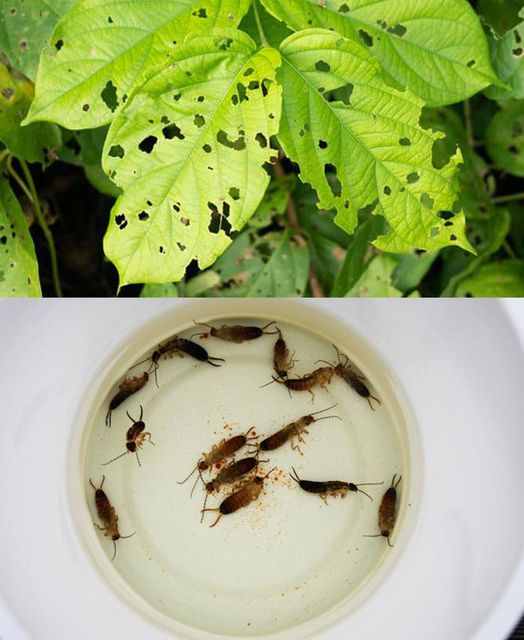Earwigs can be a nuisance in the garden, especially since they tend to hide during the day and feast on your plants at night. While they are not harmful to humans, their presence can be unsettling and damaging to your garden. If you’re noticing earwigs around your plants, don’t worry—there’s a straightforward and effective method to manage them. This article provides step-by-step instructions on creating a simple DIY earwig trap using household ingredients.
Understanding Earwigs
Before setting traps, it’s helpful to understand a bit more about earwigs. These insects are recognized by their pincers at the ends of their abdomens, which they use for defense and mating rather than attacking humans. They are nocturnal and enjoy moist, dark places like under pots or stones during the day. At night, they come out to feed on a variety of plants and sometimes even other smaller insects.
Building Your DIY Earwig Trap
Materials Needed:
- Shallow dish or container
- Vegetable oil or any used cooking oil
- Soy sauce
Instructions:
1. Prepare the Trap Dish:
Choose a shallow dish or container that can be left outdoors. A lid from a plastic container or a small disposable pie tin works well.
2. Add the Oil:
Pour enough vegetable oil into the dish to cover the bottom. The oil acts as a sticky barrier that traps the earwigs.
3. Enhance with Soy Sauce:
Spritz or sprinkle a small amount of soy sauce into the oil. The soy sauce acts as an attractant due to its strong aroma and salt content, which earwigs find irresistible.
4. Set the Trap:
Place the trap in areas where you’ve seen earwig activity, especially under pots or near plant bases where they might hide during the day.
5. Check and Dispose:
Check the trap each morning. You’ll likely find earwigs that have become trapped in the oil overnight. Dispose of the contents responsibly and replace with fresh oil and soy sauce as needed.
Additional Tips for Earwig Management
Reduce Moisture: Earwigs are attracted to moisture. Ensure your garden does not have unnecessary damp areas by managing watering practices and drainage.
Clear Debris: Regularly clear your garden of plant debris, leaf piles, and unused pots, which can provide hiding spots for earwigs.
Encourage Natural Predators: Birds and toads are natural predators of earwigs. Encouraging wildlife in your garden can help control the earwig population naturally.
Natural and Effective Earwig Deterrence
With this simple and effective DIY trap, managing earwigs in your garden becomes an easy task. By using common kitchen ingredients like vegetable oil and soy sauce, you can create an eco-friendly solution that protects your plants without the use of harsh chemicals. Keep your garden safe and enjoy the peace of mind that comes with effective pest management.
Embrace the simplicity and effectiveness of these methods to ensure a thriving, pest-free garden.


